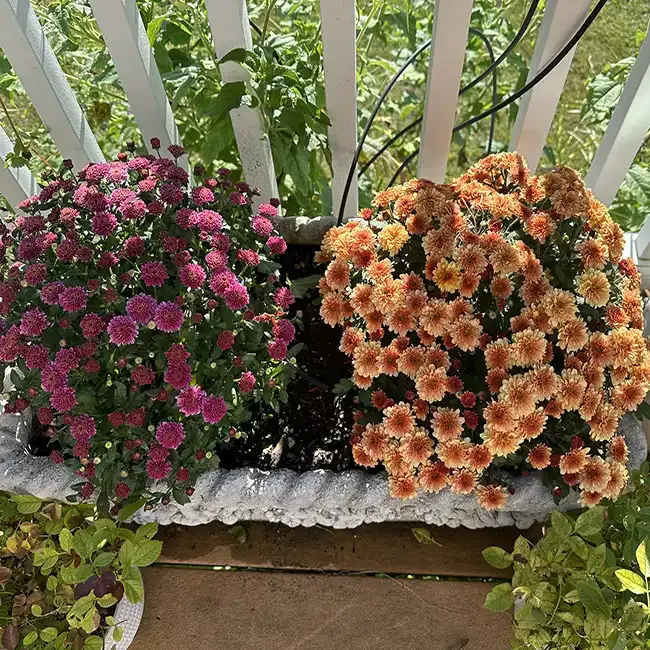
Chrysanthemums, commonly known as "mums," are beloved fall-blooming flowers that bring vibrant color to gardens as summer fades. Their versatility, variety, and easy care make them a favorite choice for gardeners and decorators alike. In this article, we will explore the history, symbolism, types, growing tips, and the benefits of including mums in your garden.
Types of Mums
Mums come in a variety of shapes, sizes, and colors, with over 40 different species and thousands of cultivars. Here are some popular types of chrysanthemums:
- Single Bloom Mums – Resemble daisies with a central disc and surrounding petals.
- Spider Mums – Have long, thin, curling petals that give a unique texture.
- Pompom Mums – Feature small, round, and fully packed blooms.
- Decorative Mums – Known for large, full flowers with densely packed petals, often used in floral arrangements.
- Anemone Mums – Have a cushion-like center surrounded by one or more rows of petals.
Growing Mums in the Home Garden
Mums are a hardy, low-maintenance flower, making them a great addition to any garden. Here are some tips for successfully growing them:
- Planting: Mums prefer full sun and well-draining soil. While they can be planted in both spring and fall, planting them in the spring allows them to establish stronger roots, leading to better overwintering and blooming in the fall.
- Watering: Mums need consistent moisture but do not like to sit in soggy soil. Water them at the base to avoid wetting the foliage, which can lead to disease.
- Fertilizing: Use a balanced, slow-release fertilizer at the start of the growing season and then again in mid-summer. Avoid fertilizing too late in the season, as this can encourage soft growth that will not survive the winter.
- Pruning: To encourage bushier growth and more flowers, pinch back mums several times during the growing season. Stop pinching in mid-July to allow buds to form for fall blooming.
- Winter Care: After the first frost, cut the mums back to about 6 inches and mulch heavily to protect the roots. Mums planted in spring are more likely to survive the winter than those planted in fall.
Benefits of Growing Mums
- Bright Fall Color: Mums provide a splash of vibrant color during autumn, when many other plants have finished blooming. They are available in a wide array of hues, from yellow and orange to pink, red, purple, and even white.
- Versatility: Whether planted in garden beds, containers, or used as borders, mums adapt well to different garden settings. They’re also a popular choice for indoor decor during fall.
- Pollinator-Friendly: Mums attract beneficial insects like bees and butterflies, which can help support the overall health of your garden.
- Symbolism and Sentiment: Mums can carry personal and cultural significance, making them great for gifting or using in floral arrangements for special occasions.
Mums are much more than just a common fall flower. Their rich history, diversity, and easy-care nature make them a favorite for gardeners of all levels. Whether you’re looking to add color to your fall garden, create lasting memories, or attract pollinators, chrysanthemums are an excellent choice. By following a few simple growing tips, you can enjoy their beauty year after year.
